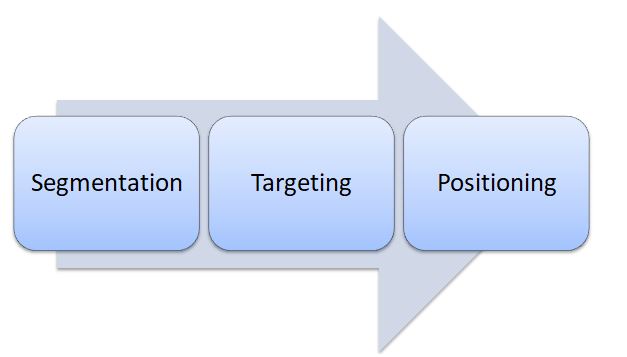Search results for: Segmentation%2C Targeting

Segmentation, targeting and positioning (STP) is a marketing model that assists classifying population segments according to their needs and common characteristics, selecting specific segments and developing products and services for this particular segment. The basic premise behind STP is that you cannot sell everything to everyone. Therefore, you need to limit your product and service offerings and target limited population segment that have higher chance to purchase them. Today, Amazon is trying to be everything for everyone, but even Amazon started only as an online bookseller to gradually increase its offering to increasing numbers of customer segments. STP is effective because it allows personalisation of products and services to the needs and wants of selected consumers. STP approach shifts the focus from product to consumers and helps in satisfying customer needs and wants profitably. Application of Segmentation, Targeting and Positioning Segmentation targeting and positioning initiatives include the following stages: 1. Segmenting the market. Segmentation is dividing population on the basis of their common traits and characteristics. Segmentation helps identifying niches with specific previously untapped needs. There are many types and bases of segmentation. The table below the most popular types of segmentation. Type of segmentation Segmentation criteria Example Geographic Region North America, Asia, Europe Density Urban/rural Climate Hot, cold, wet, dry Demographic Age Teenagers, middle aged, elderly. Gender Males & Females Life-cycle stage Bachelor Stage young, single people not living at home Newly Married Couples young, no children Full Nest I youngest child under six Full Nest II youngest child six or over Full Nest III older married couples with dependent children Empty Nest I older married couples, no children living with them Empty Nest II older married couples, retired, no children living at home Solitary Survivor I in labour force Solitary Survivor II retired Occupation Students, employees, professionals, senior manager, executives Behavioral Degree of loyalty…

Company reports, analysis and business research methods since 2011 by John Dudovskiy Save hours of business research by using a library of thoroughly written reports and articles. See Analytical Tools Learn Writing Dissertation Business reports on world’s top companies See All Reports Why Us? All you need for your business research Trusted source of knowledge, honed by years of experience, offering unparalleled depth in business reports, analysis, and research methods since 2011. Your journey to informed decision-making starts here! Competent Researchers A team of seasoned dissertation advisers with practical business management experience. Comprehensive Reports Application of major tools SWOT, PESTEL, Porter’s 5 Forces, Value Chain etc. within a single report. Dissertation Guide Comprehensive guidance from the selection of the research area to the completion of the final draft. Up-to-date Data Regularly updated articles and business reports reflect changes in the macroeconomic environment. Business Analytical Tools SWOT Analysis Ansoff Matrix PESTEL Analysis 7Ps of Marketing Segmentation, Targeting Marketing Communication Mix Porter's Five Forces Analysis Value-Chain Analysis McKinsey 7S Model SWOT Analysis A simple yet powerful framework for assessing a company's competitive position, developing business strategies, and making informed decisions. Strategic analytical tool for analyzing: Strengths Weaknesses Opportunities Threats Learn More Ansoff Matrix A marketing planning model that helps companies to identify and evaluate their growth options and determine its product and market strategy. The model integrates four different strategy options: Market Penetration Product Development Market Development Diversification Learn More PESTEL Analysis Strategic analytical tool for assessing external factors affecting businesses. The PESTEL acronym stands for: Political Economic Social Technological Environmental Legal factors impacting companies Learn More Marketing Mix (7Ps) Comprises elements of the marketing mix. Companies manipulate each element based on their marketing and business strategy: Product Place Price Promotions Process People Physical Evidence Learn More Segmentation, Targeting, Positioning (STP) Consequent…

Search About us Number of ebooks 300+ Started in 2011 by John Dudovskiy, research-methodology.net is an educational portal that offers knowledge, resources and practical insights for conducting business studies. John Dudovskiy is a seasoned dissertation adviser and he has experience in assisting hundreds of students with their dissertations, reports and essays in business discipline. All materials published at research-methodology.net are designed to support and inspire professionals and students at all levels to conduct studies in the area of business. read more Business Analytical Tools SWOT is a strategic analytical tool for assessing strengths and weaknesses of a business, analyzing available opportunities and threats faced by the business. SWOT analysis can be used at organizational and personal levels. Ansoff Matrix is a marketing planning model that helps the e-commerce and cloud computing company to determine its product and market strategy. Ansoff Matrix illustrates four different strategy options available for businesses. These are market penetration, product development, market development and diversification. PESTEL is a strategic analytical tool used to assess external factors affecting businesses. PESTEL acronym stands for political, economic, social, technological, environmental and legal factors impacting companies. PESTEL has recently evolved from PEST analysis once intensifying forces of globalization and intensifying forces of competition in the marketplace coupled with other set of factors increased the importance and potential impact of environmental and legal factors on businesses. The concept of marketing mix (also known as 7Ps of marketing) comprises elements of the marketing mix that consists of product, place, price, promotion, process, people and physical evidence. Companies manipulate with each element of the marketing mix according to its marketing strategy, as a part of its business strategy. Segmentation, targeting and positioning involves a set of consequent marketing decisions that constitute the core of company’s marketing strategy. Segmentation refers to dividing population into…
